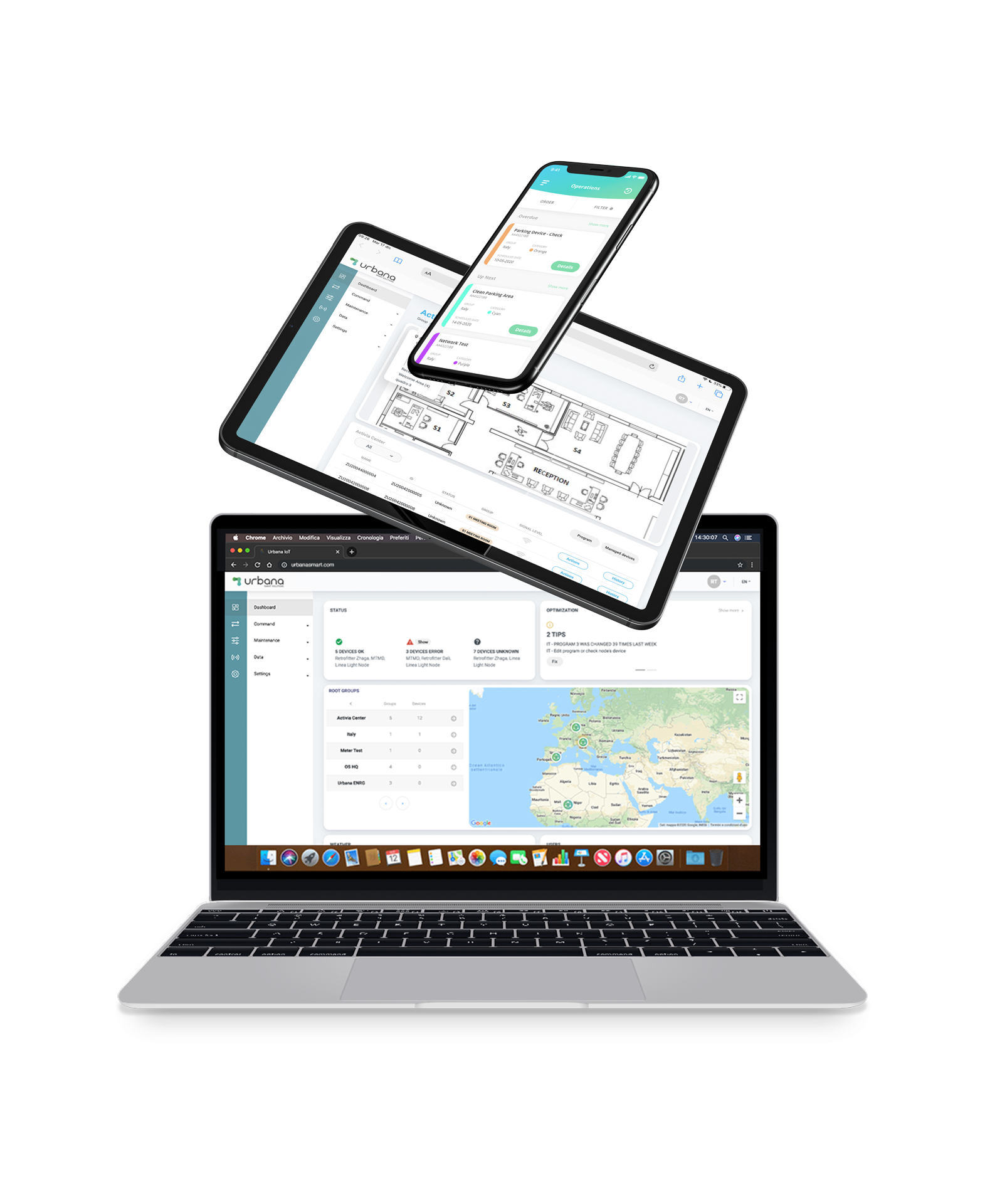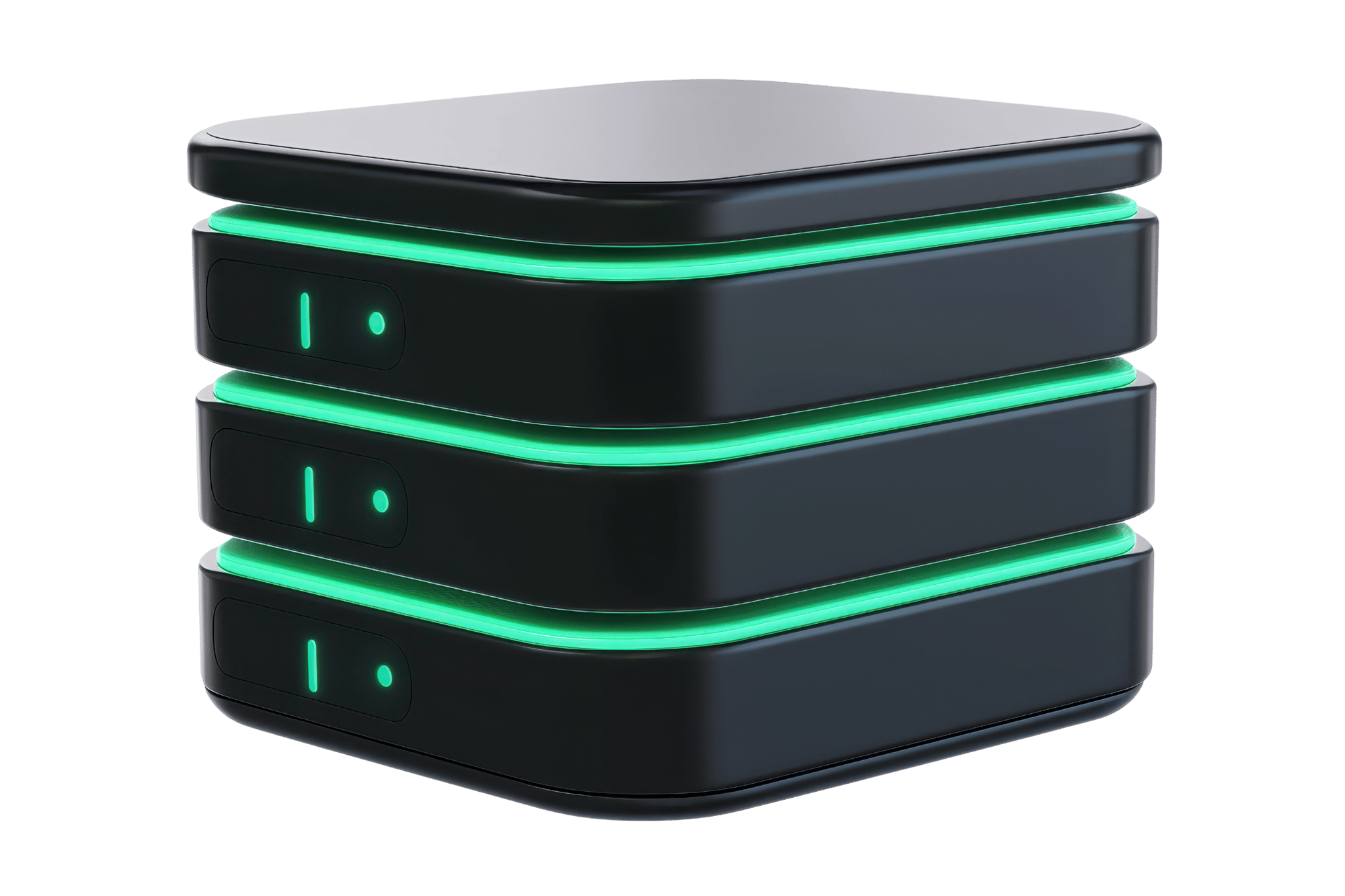
Urbana IoT Platform:
The Heart of Your IoT Solutions
For every complex challenge, we have a simple solution.
Get Your System Up and Running Instantly with Urbana IoT Platform.
Experience quick, hassle-free installation with no technical expertise required.
Urbana IoT Platform simplifies and streamlines your IoT system for effortless management.
Device and Network Management
Effortless Device & Network Management at Scale
Centralize, Secure, and Simplify Your Smart Infrastructure
- Unified Device Management - Monitor, configure, and control all IoT devices from a single, intuitive dashboard.
- Multi-Network Support - Compatible with LoRaWAN, NB-IoT, and any other connectivity protocols based on MQTT.
- Scalable Network Orchestration – Seamlessly manage thousands of devices and connections across multiple sites and technologies.
- Zero-Touch Provisioning – Rapidly onboard new devices with automated setup and configuration workflows.
- Remote Firmware Updates – Keep devices secure and up to date without on-site intervention.

Real-Time Data Collection
Real-Time Data Collection That Drives Instant Insight
Fast, Reliable, and Ready for Action
- Edge-to-Cloud Synchronization - Collect and pre-process data at the edge with seamless syncing to the cloud.
- Data Normalization & Tagging – Standardize incoming data for easy comparison, analysis, and integration.
- Anomaly Detection & Alerts – Instantly identify and act on unusual patterns or thresholds with configurable alerts.
- Historical Data Access – Combine real-time and historical views for deep analytics and trend analysis.
- Secure Data Transmission – Encrypted data streams from device to cloud to protect sensitive information.

Automation & Notification
Intelligent Automation & Smart Notifications
React Instantly, Operate Efficiently
- Rule-Based Automation Engine – Define “if-this-then-that” logic to automate device actions and workflows.
- Custom Trigger Conditions – Create automation rules based on thresholds, time schedules, sensor values, or combined conditions.
- Multi-Device Coordination – Synchronize actions across multiple devices, sites, or systems with centralized control.
-
Real-Time Event Handling – Respond to events the moment they happen with immediate automated responses.
-
Integration with External Systems – Trigger actions or send data to third-party platforms (e.g., CMMS, SCADA, CRM).

Advanced Analytics Engine
From Data to Decisions
Unlock Predictive Insights with Our Advanced Analytics Engine
- Built-In Analytics Tools – Analyze data directly within the platform using preconfigured and custom dashboards.
- Predictive Modeling – Leverage historical and real-time data to forecast trends, detect anomalies, and optimize performance.
-
AI & Machine Learning Integration – Enhance insights with intelligent pattern recognition and automated decision support.
-
Custom Metrics & KPIs – Define the metrics that matter most to your operations and track them in real-time.
-
Time-Series Analysis – Dive into granular, timestamped data for detailed trend and behavior analysis.
-
Correlational Insights – Discover relationships between different devices, sensors, or environmental factors.
-
Data Aggregation & Filtering – Easily slice, group, or filter data across locations, device types, or time ranges.

Low-Code Custom UI/UX
Design Your Dashboard, Your Way
Low-Code UI/UX Built for Flexibility
-
Low-Code Interface Builder – Create and customize dashboards, views, and control panels with drag-and-drop simplicity.
-
Custom Widgets & Visualizations – Choose from a rich library of charts, gauges, maps, and data cards—or build your own.
-
Role-Based UI Customization – Design tailored experiences for different user types: admins, operators, clients, etc.
-
Responsive & Cross-Device – Interfaces adapt automatically to desktops, tablets, and mobile devices.
-
Dynamic Data Binding – Connect UI components directly to live data streams with minimal configuration.

Multi-Tenancy & IAM
One Platform, Many Workspaces
Secure, Scalable Multi-Tenancy with Granular Access Control
-
True Multi-Tenant Architecture – Host and isolate multiple clients, departments, or business units on a single platform instance.
-
Granular Role-Based Access Control (RBAC) – Assign precise permissions by user, role, or group to ensure the right access levels.
-
Tenant-Level Data Isolation – Guarantee that each tenant’s data, devices, and configurations remain securely separated.
-
Custom Branding per Tenant – Enable unique logos, themes, and settings for each tenant’s interface.
- User Provisioning & Management – Easily add, remove, and manage users across tenants from a centralized admin panel.
- Self-Service Portals – Allow tenants to manage their own users, roles, and settings without impacting others.

Indoor & Outdoor Mapping
From Floorplans to City Blocks
Unified Indoor & Outdoor Mapping in One IoT Platform
-
Integrated Indoor & Outdoor Maps – Visualize assets, devices, and events on detailed floorplans and geospatial maps.
-
Custom Floorplan Uploads – Import your own building layouts and infrastructure blueprints for precise indoor mapping.
-
Real-Time Location Tracking – See the live position of mobile assets, people, or sensors with high accuracy.
-
Multi-Layer Map Views – Toggle between indoor zones, GPS maps, and sensor data overlays for complete context.
-
Interactive Device Pins – Clickable markers show status, alerts, and data streams from each mapped device.

API & Integration
Open APIs for Full System Integration
Empowering Data Flow Across Platforms
- Custom Integration Flexibility – Easily connect Urbana IoT with third-party platforms, legacy systems, and cloud services.
- API Access with Scoped Permissions – Control what data and functions third-party apps can access per user or tenant.
- Real-Time Data Streaming – Stream live data to external analytics platforms or data lakes for further processing.
- API Access for Data Science – Pull clean, structured datasets into your own BI tools or ML pipelines.



